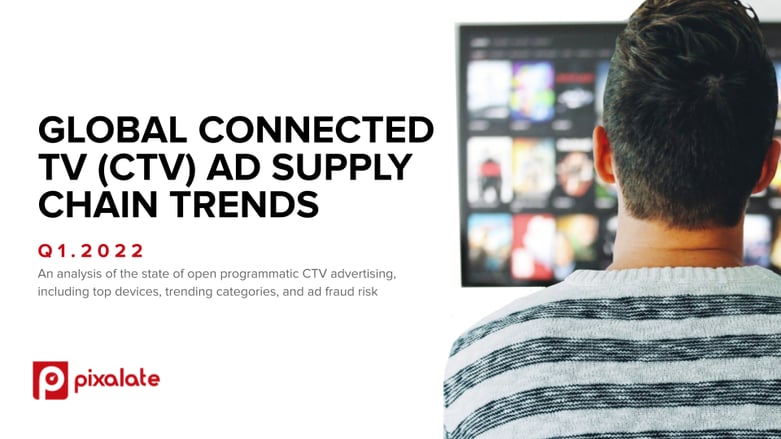
This week's review of ad fraud and privacy in the digital advertising space.

Pixalate released its Global Connected TV Ad Supply Chain Trends Report for Q1 2022 with the following key findings:
The report also included analyses of key trends including CTV ad spend trends by global region, ad fraud in CTV, household reach via CTV open programmatic advertising, CTV device trends, Roku Channel Store and Amazon Fire TV Channel Store insights, and the top CTV operating systems.

In a new study published by the Association of National Advertisers, “the cost of various forms of advertising fraud -- including app install farms, SDK spoofing, click spam & ad stacking, as well as click injection -- is projected to be $120 billion in wasted media buys in 2022, up 21% from 2021.”
MediaPost published the study adding that these elements of ad fraud cost advertisers up to $51 million a day and that number was likely to rise to $100 billion annually by next year (2023).

According to Latest Hacking News, CTV advertising is becoming the most popular form of advertising and with its growth comes an increased risk of fraud. The major reasons for CTV fraud are lack of regulation, high stakes and an overall fragmented landscape.
The article talked in detail about spoofing – the most common form of CTV ad fraud – defined as “disguising a signal from fraudulent activity as a legitimate source.” The article also talked about some recent CTV ad fraud schemes and how to avoid becoming a victim of CTV ad fraud.

During the COVID-19 pandemic, most of America’s children switched from in-classroom to at-home remote learning. According to a recent Human Rights Watch report titled “How Dare They Peep Into My Private Life?,” many popular ed tech tools used by school districts during the pandemic included data-tracking tools that users were unaware of.
According to Kidscreen, “using a free, open program called Blacklight, HRW [Human Rights Watch] found that popular platforms used by kids—including Shad, WeSchool, Minecraft Education Edition, YouTube and Facebook—have cookies and ad trackers with the ability to gather data about users and their devices. The organization notes that while some of these platforms are not explicitly edtech or targeted at kids, children were recommended or required to use them by schools and governments during lockdown protocols.”

"We the users shouldn’t be expected to read and consent to privacy policies. Instead, let’s use the law and technology to give us real privacy choices," wrote the Washington Post. "When you’re presented with one of these “agree” buttons, you usually can’t negotiate with their terms. You could decline to use apps or websites — but it’s increasingly hard to participate in the world without them."
*By entering your email address and clicking Subscribe, you are agreeing to our Terms of Use and Privacy Policy.
These Stories on Weekly Recaps
*By entering your email address and clicking Subscribe, you are agreeing to our Terms of Use and Privacy Policy.

Disclaimer: The content of this page reflects Pixalate’s opinions with respect to the factors that Pixalate believes can be useful to the digital media industry. Any proprietary data shared is grounded in Pixalate’s proprietary technology and analytics, which Pixalate is continuously evaluating and updating. Any references to outside sources should not be construed as endorsements. Pixalate’s opinions are just that - opinion, not facts or guarantees.
Per the MRC, “'Fraud' is not intended to represent fraud as defined in various laws, statutes and ordinances or as conventionally used in U.S. Court or other legal proceedings, but rather a custom definition strictly for advertising measurement purposes. Also per the MRC, “‘Invalid Traffic’ is defined generally as traffic that does not meet certain ad serving quality or completeness criteria, or otherwise does not represent legitimate ad traffic that should be included in measurement counts. Among the reasons why ad traffic may be deemed invalid is it is a result of non-human traffic (spiders, bots, etc.), or activity designed to produce fraudulent traffic.”

